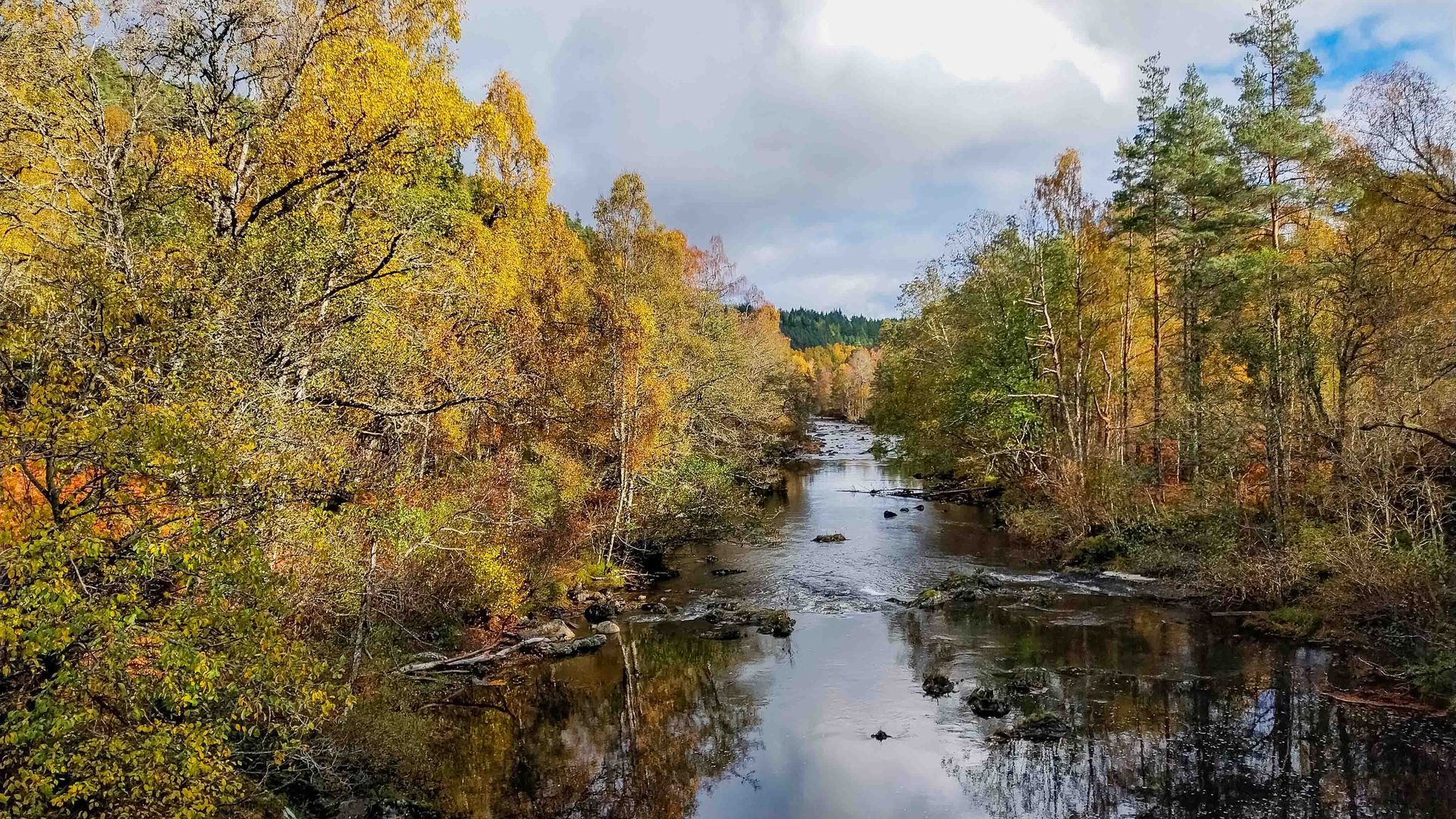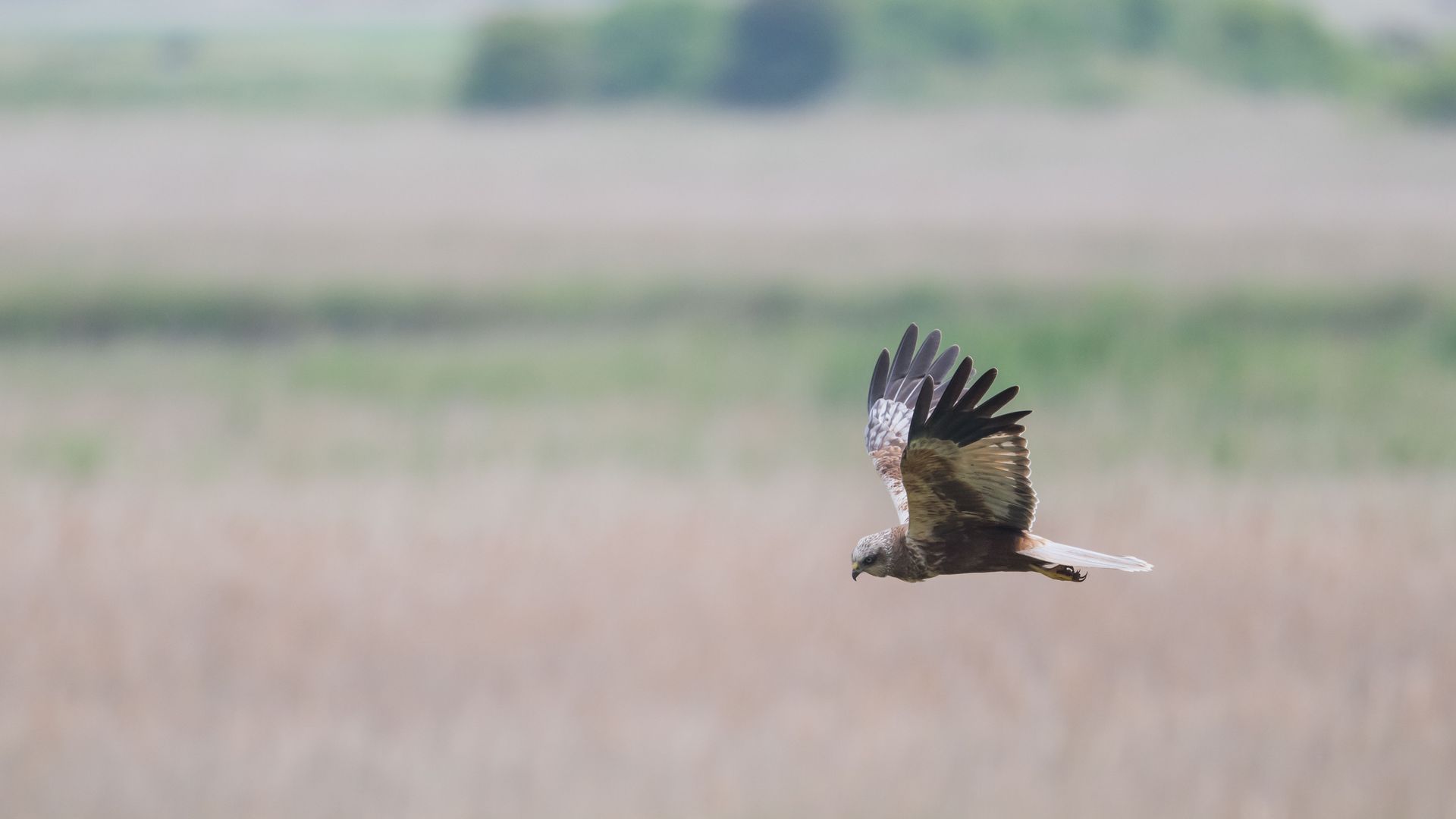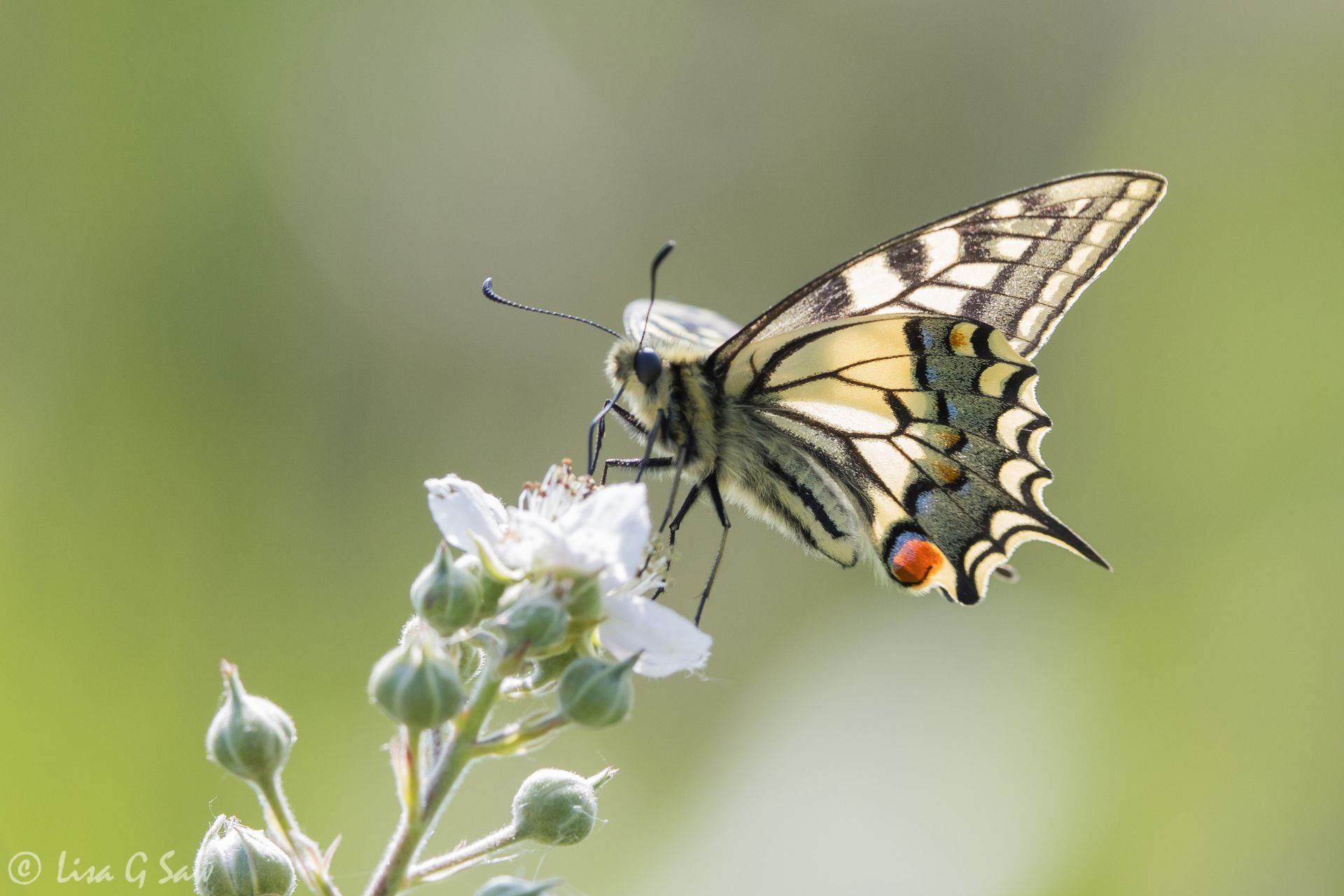Antarctica Day 2
HEADING TO THE ANTARCTIC PENINSULA
We had an early morning wake up call at about 5am to say we were close to the Antarctic Peninsula and had reached the pack ice. Despite the early hour, there was a lot of excitment on board and the cold air certainly woke me up. All around us were icebergs and brash ice and slowly the ship surged forwards. There were two Cormorants sitting on top of a large iceberg. They looked tiny in comparison.
The only penguins we saw were Gentoos in the water, porpoising alongside us and then heading away. I was even lucky enough to photograph two porpoising together, which I was thrilled about.
It wasn't long before the snow started. You can just about see some of it on the left side of this next picture, and just how windy it was - they weren't softly falling large flakes of snow. I don't know how cold it was, but it definitely felt below freezing and we certainly made sure we were wrapped up.
A few birds were flying around the boat and it was lovely to see the Snow Petrels again, so well camouflaged against the ice. But, perhaps the highlight was seeing our first Antarctic Petrels. They're so rarely seen. With a wingspan of 100-110cm, they're a bit larger than our regular companions on the trip, the Cape Petrels.
We kept our distance from any large icebergs, but a few smaller ones were quite close and I could even see the ice below the surface.
Sadly, the pack ice was further north than had been hoped - it hadn't yet melted. This prevented us accessing the mainland of Antarctica. We always knew that this could possibly happen, being so early in the season. The captain of the ship was concerned about the loose ice in the water closing in on us. The weather can change that quickly, being stuck in the ice was a very real concern. It had happened to him before and for several days the ship had been unable to move until the ice thawed. I could understand his caution, though it was disappointing not to be landing on the mainland. Even turning the ship around in a tight space was tricky.
Knowing that we would be heading north again, returning to the South Shetland Islands, I wanted to make the most of the time we had at this point. It seemed to pass too quickly. I think we were only there about an hour. I would have liked longer, to really fully absorb the significance of where we were, and why we were having to turn back.
In some ways, it was disappointing the weather was so poor. We weren't able to see land ahead at all, so for me there was no real sense of how far away we were from it. I found myself reminiscing about my trip to the Arctic in 2016 and how different the two trips were. On that occasion, the edge of the pack ice was our destination, to see the Polar Bears that hunt on it during the summer months. The light was beautiful and the sun didn't set.
The Arctic is a frozen sea, so there was no land for us to reach, unlike in the Antarctic. In fact, this is the main difference between the Poles and why the Antarctic is a continent. Of course, having land and mountains creates just the kind of weather we were experiencing, so it wasn't surprising the conditions were worse.
The poor visibility made me think about the harsh conditions and challenges of visiting such a remote frozen continent. I thought about all the explorers that had been before us over the years. It was a good reality check - I felt privileged to be there at all. I felt lucky to have been able to experience it, even if it hadn't been what I had hoped for. I thought about the promotional photos of azure skies over stunning icebergs that I hoped to see. But, you don't always get those kinds of days. I would still love to see that, but for me, it felt important and significant to accept what is. This was our reality. I made a conscious decision to let go of any disappointment or frustration as I didn't want it to ruin what was otherwise a totally amazing experience. I may not have landed on the mainland, but in my mind, I'd still been to the Antarctic.
As we were leaving the pack ice, I noticed a pocket of sunshine light up an iceberg in the distance. It was tantalisingly close. It was quite symbolic.
Bob and I headed down to the lower deck for breakfast when the pack ice was behind us. Whilst sitting down to eat, I saw this impressive blue iceberg through the window. I had to make do with a phone photo. Then, I noticed a group of penguins on the lower ridge and I was gutted I wasn't out on deck taking photos with my proper camera.
It was another rough day at sea and we weren't allowed out on the main decks, however, we were allowed out on the fifth deck next to the Bridge of the ship. Bob and I were about to listen to one of the talks, but then we saw more Antarctic Petrels flying alongside the boat, much closer than before. So, we made a swift exit and went up to the top of the boat. We hadn't been up there before. There wasn't a huge amount of space on either side, and it was very windy, with few places to shield yourself from it, but we had quite a bit of fun photographing these lovely birds. We even had the benefit of some sunshine for a while too.
Whilst we may not have been able to land on the mainland because of being early in the season, this was the very reason we were seeing the Antarctic Petrel, which is so rarely seen later, in the height of summer. The silver lining, as a result of turning around and heading to the South Shetland Islands again, was in having such fabulous close views of this lovely bird.
Of course, the sunshine didn't last! By the time land was in sight again, the clouds dominated the sky and hung close to the mountain tops.
HALF MOON ISLAND
Late in the afternoon, we had a landing on Half Moon Island, which is quite small. I could see penguins lining the low ridges that were dwarded by the mountains on the island behind.
It was snowing again by the time we set foot on shore. A Gentoo Penguin happened to come ashore the same time and looked over at me briefly before continuing on its own journey.
The vast majority of penguins on the island were Chinstraps. Generally, they were a lot cleaner than the ones we'd seen the day before, as there was much more snow now we were a bit further south. Those just lying around, sleeping, didn't even notice us passing by, or were unperturbed by our presence.
As always, if any penguins were walking or sliding along the snow, to or from the colony, we had to give them space and right of way.
Of course, we were following a route that had been set out for us with the temporary red markers, but the penguins could go wherever they wanted, which meant checking behind you every now and then. You definitely had to stay alert. You never knew where or when the next penguin would appear.
Bob and I were feeling very relaxed by this point on our journey. We'd seen so much already and had taken A LOT of photos. We let others rush ashore and so we were often amongst the last to arrive, and subsequently amongst the last to leave, which had its own benefits - time with fewer people around.
When we reached the point where the people (above) were standing, we had some lovely views of the Chinstraps vocalising. I love how they stretch up and flap their flippers!
Another advantage of travelling early in the season, was having the opportunity to witness some of the penguin species mating. I was thrilled. It isn't exactly a private affair with the rest of the colony surrounding them. But, despite this, I was able to observe a few tender moments between the penguins, as their beaks touched and caressed each other.
As we were retracing our steps towards the middle of the island, we heard that an Adélie Penguin had been spotted in that vicinity. Eager to have another sighting, hopefully better than the first, I anxiously looked out for it. There was a large open expanse of snow above the beach, with a few penguins scattered around. But, all on its own, not particularly close by, was one lone Adélie lying down in the snow. I took a few photos, even though it wasn't close. It then gradually made its way down the slope closer to the beach, so we walked down the way-marked route back to our landing site and walked along the beach to join a few of our fellow passengers who were already there. The problem was, we were now much lower down and since Bob and I are vertically challenged, we struggled to see it. I didn't take many photos, but I love this one, when it raised up its beak vocalising and lifted its flippers in the air. I felt sorry for it though, all alone, without any others of its kind nearby.
Unfortunately, our presence on the beach unsettled a young Weddell Seal pup that was also lying on the snow above us with its mum. Agitated, it started to move about. Then suddenly, it slipped down the slope closer towards us. It stopped short of the drop down to the beach and peered at us from the snow. It was absolutely gorgeous! I took one of my favourite photos of the trip (bottom), though I was sad about how it had come about. Its mum clearly was not happy and I knew that we had disturbed them. Instinctively, Bob and I retreated back along the beach, though that in itself was quite tricky as there were other penguins coming or going from the sea. But, the others in the group kept watching the Adélie, so were stuck on that side.
Later, I heard that the mum joined the pup and the two of them came down to the beach and went into the water, hopefully finding somewhere else more peaceful to rest. I felt bad that our presence had affected the animals in this way. As much as you try not to disturb them, it is inevitable that you do sometimes. It might have been minimal, and there was no real serious or prolonged threat, but, in this climate and hostile environment, the wildlife need to conserve their energy for the things that matter and not humans disturbing them unnecessarily. It was a good reminder for me.
Rather than head back early to the ship, we decided to walk the loop trail around the other end of the island, which we'd not yet explored. The ground was lower, so there was less to see, with virtually no penguins, though we did spot a group of them on an iceberg in the bay.
Along this walk, we saw another Weddell Seal mum and pup. The youngster was calling out and really struggling to manoeuvre its large body over the rocks. I thought perhaps it was hungry, but its mother was not budging an inch to allow it to suckle from her. However, it also might have been vocalising because there were a handful of people watching it.
We enjoyed our walk on the quieter part of the island, though walking through the snow was hard work at times. When we reached the middle of the island again, those that were brave enough to do the polar plunge were getting changed and going into the water. In the end, there were about a dozen who did it. Very swiftly afterwards, they had to put some warm layers on again and make a hasty retreat to the ship. I wasn't even remotely tempted to do the plunge myself. I prefer to stay warm!
Despite not actually having the opportunity to land on the Antarctic Peninsula and spending quite a bit of time at sea again, I really enjoyed the day. It was quite a surreal experience to be surrounded by the pack ice and icebergs in the morning, we had great fun photographing the Antarctic Petrels when we were sailing, and the highlight was our landing on Half Moon Island with more wonderful wildlife sightings. Unfortunately, though, there were a lot of people who were not happy. For some, their expectations were not met and they felt huge disappointment, anger and frustration. All sorts of comments were flying around about what could have been done, or should have been done. I understood where they were coming from and sympathesized with them. It was such a shame that it seemed to completely ruin the whole trip for some people. Perhaps they had not been aware that not being able to land was a very real possibility beforehand.
For the first time on the entire trip, I felt a horrible negative energy fill the dining room that evening. It was like an infection that spread through the ship. I didn't want to be surrounded by all the negativity. It was draining and bringing me down. Bob and I were both determined not to let it ruin the remainder of our holiday and tried to focus on all the things we'd enjoyed. Plus, we made a concerted effort to be around those people who were generally positive about the trip, like us.
I was so grateful for the opportunity to be there in the first place. I didn't doubt that our safety had been the highest priority, but I also realised we had limited time and options. This is the reality of travelling to the Antarctic and going early in the season. It's the risk you take. There are no guarantees with nature and the unpredictability of the weather is just one aspect of that.
I'm of the opinion that it's better to have no or low expectations and appreciate everything you experience - the highs and the lows - if you want to avoid feeling disappointed. As much as possible, I try to focus on what I have, not what I don't have. I'm a 'glass half full' person and that makes me happy.
With one day still left to explore the polar region, I was ready for another fabulous day ahead, even though I had no idea what we would experience.
Next post in the series: Antarctica Day 3!
To see a smaller selection of my favourite photos from the holiday, click here.



